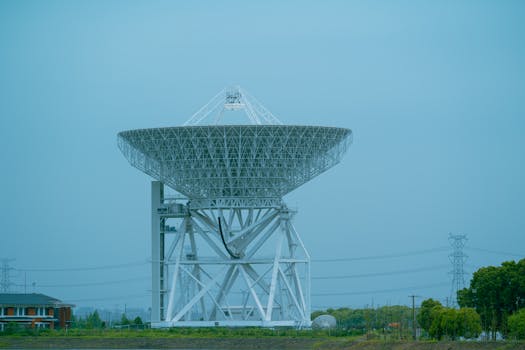The Future is Now: Exploring the Cutting-Edge Innovations in Satellite Telecommunications

The Future is Now: Exploring the Cutting-Edge Innovations in Satellite Telecommunications
Satellite telecommunications, The Future is Now: Exploring the Cutting-Edge Innovations in Satellite Telecommunications have been a vital part of the global communication infrastructure for decades, providing connectivity to remote and underserved areas. However, the industry is on the cusp of a revolution, driven by cutting-edge innovations that are transforming the way we communicate. In this article, we will explore the latest advancements in satellite telecommunications and what they mean for the future of the industry.
One of the most significant developments in satellite telecommunications is the launch of new satellite constellations. These constellations, such as OneWeb and Starlink, consist of hundreds or even thousands of small satellites that work together to provide global coverage. This approach offers several advantages over traditional satellite systems, including lower latency, higher throughput, and greater flexibility. With the ability to launch multiple satellites at once, constellation operators can quickly and easily expand their coverage areas, making it possible to provide connectivity to even the most remote regions.
Another area of innovation in satellite telecommunications is the development of new transmission technologies. For example, the use of advanced modulation techniques, such as quadrature amplitude modulation (QAM), allows for more efficient use of satellite bandwidth, enabling the transmission of larger amounts of data at higher speeds. Additionally, the adoption of beamforming technologies, which enable the formation of highly directional beams, has improved the efficiency and capacity of satellite communications. These advancements have made it possible to support a wide range of applications, from broadband internet access to high-definition video transmission.
Advances in Satellite Technology
Recent advances in satellite technology have also played a significant role in the evolution of the industry. The development of smaller, more efficient satellites has made it possible to launch more satellites at a lower cost, increasing the accessibility of satellite-based services. Furthermore, the use of electric propulsion systems, which are more fuel-efficient and have longer lifetimes than traditional chemical propulsion systems, has extended the lifespan of satellites and reduced the need for replacement launches.
The integration of artificial intelligence (AI) and machine learning (ML) into satellite telecommunications is another area of innovation. AI and ML can be used to optimize satellite operations, such as predicting and preventing outages, and improving the efficiency of satellite capacity allocation. These technologies can also be used to enhance the quality of service, by analyzing network traffic patterns and making adjustments in real-time to ensure optimal performance.
Challenges and Opportunities
Despite the many advances in satellite telecommunications, there are still challenges to be addressed. One of the main concerns is the issue of space debris, which poses a risk to the safety and sustainability of satellite operations. As the number of satellites in orbit increases, so does the risk of collisions and the accumulation of debris. To mitigate this risk, the industry is working to develop sustainable practices, such as designing satellites for de-orbiting and using collision avoidance maneuvers.
Another challenge facing the industry is the need for regulatory frameworks that can keep pace with the rapid evolution of satellite telecommunications. As new technologies and business models emerge, there is a need for updated regulations and standards to ensure that the industry can continue to innovate and grow. This is particularly important in areas such as spectrum allocation, where the increasing demand for satellite bandwidth requires careful management to avoid interference and ensure efficient use of resources.
Conclusion
In conclusion, the future of satellite telecommunications is exciting and full of possibilities. With the launch of new satellite constellations, the development of advanced transmission technologies, and the integration of AI and ML, the industry is poised for significant growth and innovation. While there are challenges to be addressed, the opportunities presented by these advancements are substantial, and the potential for satellite telecommunications to bridge the digital divide and provide connectivity to underserved areas is vast.



